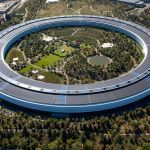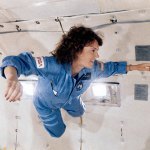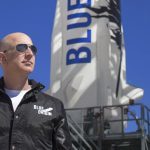Dominique Luchart's Blog, page 563
July 20, 2021
Google TV update adds option to manually clear out ‘Continue watching’ row, Jon Porter

Google TV, the new smart TV interface that debuted on Google’s most recent Chromecast, appears to be getting a small but important tweak for its “Continue watching” row. Over on Reddit (via 9to5Google) user u/Alfatango97 has spotted a new option to manually hide entries from the row, which is designed to let viewers quickly jump back into unfinished TV shows or films.
When it works, the Continue watching row is a convenient way pick up from where viewing was interrupted. But occasionally it can get cluttered with content you started watching and have no intention of finishing, or content that’s finished but whose credits are so long that it still shows up as in-progress. Being able to manually clear out the row should make it easier to see the shows and films you actually want to finish.
Hide from continue watching on Google tv had been added
from
It’s the latest example of Google’s two TV interfaces — Android TV and Google TV — slowly converging. 9to5Google notes that the ability to manually prune titles from the “continue watching” list has been possible in Android TV for a while, it’s just now shifting over to Google TV. Meanwhile, Android TV has received a series of updates that have made it look and perform more and more like Google TV. The convergence seems inevitable given that Google TV is set to replace Android TV over the next two years.
9to5Google notes that the feature is yet to widely roll out. We’ve contacted Google to ask when it’s due to be available to everyone, and will update this article if we hear back.
The post Google TV update adds option to manually clear out ‘Continue watching’ row, Jon Porter appeared first on NEWDAWN Blog.
July 19, 2021
Apple pushes back return to offices due to rising COVID cases: report, Sam Byford

Apple is delaying its plan to return to mandatory in-person work because of the increase of COVID cases driven by the Delta variant, according to Bloomberg. The company had laid out a roadmap for returning to its offices in early September, with employees expected to come in at least three days a week, but now that deadline has reportedly been extended “by at least a month to October at the earliest.”
Apple’s return to offices was controversial among some of its employees. A group of workers in an internal Slack channel for thousands of “remote work advocates” collaborated on a letter to CEO Tim Cook and the rest of Apple’s leadership, making the case that the company should embrace a more flexible work-from-home policy. Deirdre O’Brien, Apple’s SVP of retail and people, responded to the request by saying “in-person collaboration is essential to our culture and our future.”
Apple was notoriously unfriendly to the concept of remote work pre-pandemic, and while allowing employees to work from home two days a week is a big change for the company, other Silicon Valley giants are giving workers more choice in where they do their jobs. Facebook CEO Mark Zuckerberg, for example, told The Verge last year that he sees around half of the company permanently shifting to remote work within the next five to ten years. Google has said that it expects 20 percent of employees to stick with remote work once its offices are open again.
Now it appears that Apple is one of the first companies to alter its plans in response to surging COVID cases. Employees will be given at least a month’s warning before they’ll be expected to return to in-person work, according to Bloomberg.
The post Apple pushes back return to offices due to rising COVID cases: report, Sam Byford appeared first on NEWDAWN Blog.
How Boosted went bust, Sean O’Kane


Kanye wanted a meeting.
That was basically all a small group of employees at Boosted knew in early 2019 after they heard the rapper-mogul had taken an interest in the company’s electric skateboards.
A partnership, an investment, an endorsement — whatever he was considering, a meeting with Kanye West seemed absurd. But then again, Boosted was also working on a secret project with skateboard legend Tony Hawk at the time. Was it really a stretch to think the startup could work with Yeezy?
Apparently. Kanye spent the meeting — two, in fact, over the course of 2019 — focused more on his ultimately doomed vision for sustainable cities than he did discussing a tangible deal with Boosted, two former employees tell The Verge. (Kanye could not be reached for comment.)
At the time of the Kanye meetings, Boosted had outgrown its Kickstarter roots, and had defined the market for electric longboards — which had emerged as part of a rideables craze in the mid-2010s. The brand was potent, but the startup was losing focus. It wasn’t just Kanye’s off-topic meetings, though some employees felt they were symbolic. Boosted was just spread too thin. It had launched half a dozen models — each with different configurations — in just six years, on a shoestring budget. Then it was hit hard by the Trump administration’s tariffs on goods made in China, and a delayed electric scooter, and eventually ran out of money.
 Photo: Kim Kardashian / Instagram
Photo: Kim Kardashian / InstagramBut while Boosted is dead, the beloved electric skateboard startup’s carcass is still drawing buzzards. Its biggest investor, the eponymous venture firm founded by surfer-fighting billionaire Vinod Khosla, has spent the last year waging a pair of lawsuits against Lime in an attempt to reverse the scooter-sharing giant’s purchase of Boosted’s intellectual property.
Khosla Ventures’ lawyers say Lime sabotaged a potential bailout of Boosted from Yamaha in late 2019 and conspired with Boosted’s biggest debt lender to rig the sale of the startup’s remains a few months later. Lime’s team has argued the powerhouse firm is simply raw about a “failed business negotiation” that ultimately couldn’t save a “dying business.”
The fight likely won’t end for months. (A trial is tentatively scheduled for May 2022.) But interviews with six former Boosted employees, as well as an examination of the lawsuits, help reveal in the greatest detail yet just how the category-defining electric skateboard startup fell apart, and why seemingly nothing — not a partnership with Tony Hawk, the constant support of one of YouTube’s biggest stars, or even Kanye West — could save it.
Things weren’t always so dire at Boosted. The startup was one of Kickstarter’s earliest success stories after it transitioned out of a Stanford incubator in 2012. A few years later, Boosted’s electric longboard became the go-to vehicle for YouTube star Casey Neistat. It seemed like in every vlog he posted, there was Boosted’s board: hanging behind him on the wall of his studio, or under his feet as he carved through Manhattan traffic.
Neistat made Boosted so popular that it was hard for the startup to keep up with the orders that were pouring in. And co-founder Sanjay Dastoor attained cult status among the startup’s customers — not just because of the quality and popularity of the product, but because he was so hands-on that in 2016 he flew across the country to a board owner’s house to diagnose a battery failure.
But Dastoor handed over the company to Jeff Russakow in 2017, a fellow Stanford grad. With that changing of the guard came new, much bigger goals. “The company is just doing splendiferously well, and we’re looking forward to an exciting roadmap of many new form factors of light vehicles and other cool stuff,” he said at the time. Russakow told The Verge he wanted to “be able to move faster on innovation,” and do “two major product releases of some cool exciting announcement” per year — “an Apple-like cadence,” he said.
 CEO Sanjay Dastoor (left) and CTO John Ulmen (right) Boosted Board, a battery powered skate board on Wednesday, June 14th, 2017, in San Francisco, California.Photo by Liz Hafalia / The San Francisco Chronicle via Getty Images
CEO Sanjay Dastoor (left) and CTO John Ulmen (right) Boosted Board, a battery powered skate board on Wednesday, June 14th, 2017, in San Francisco, California.Photo by Liz Hafalia / The San Francisco Chronicle via Getty ImagesBoosted rode this momentum for a while, and in early 2018 launched a second-generation board, along with a mini board and a high-performance variant called “Stealth” that eventually became its biggest hit. The startup then raised nearly $80 million by the end of 2018 from Khosla Ventures and others. In 2019 Russakow described that funding round to The Verge as being full of “really supportive investors” who are “absolutely committed to the vision of the company.” He used the money to take Boosted global, expanding the brand into more than 30 countries.
Boosted even started working with Birdhouse, the company run by perhaps the most famous skateboarder on the planet, Tony Hawk. The startup also discussed making a board for kids and tapped another pro skater, Andy Macdonald, to work on the project. Boosted’s electric longboards had never really been a natural fit with skateboard culture, so validation from two of the sport’s icons felt, to some of the employees, like recognition of what they (and customers) already knew: that Boosted’s boards kicked ass.
By 2019, Russakow’s efforts to grow the company appeared to be working, too. It even drew interest from premium bike company Specialized, two of the former employees tell The Verge.
But Boosted needed more money. The growth was eating up a lot of the revenue the company was generating in those new markets, and even cut into the money it had raised. Making matters worse, the company took a hit when then-President Donald Trump started a trade war with China. Boosted had outsourced manufacturing to China starting in 2016, and while Russakow told The Verge in May 2019 that the startup had “the financial ability” to “eat” the tariff on the skateboards, it turns out that was easier said than done. (Boosted eventually applied for, and was granted, exclusions from the tariffs, but refunds for them were still outstanding when the startup went under.)
The pressure of maintaining this pace of growth — which was coming from Russakow but also from Khosla Ventures, the former employees say — had Boosted running ragged. What especially tripped things up, though, was the Boosted Rev: the startup’s super-rugged, $1,600 electric scooter that debuted in early 2019.
Boosted announced the scooter just as its bank accounts started suffering, and almost immediately had to delay the rollout (in part because of an issue with the latch meant to keep it folded, but also because scaling up production was tricky). Khosla Ventures and Boosted’s other backers had just put money into the company — they didn’t want to add even more. So in May 2019, Boosted quietly turned to a “venture debt” firm called Structural Capital for what it hoped would be short-term help. The deal’s terms weren’t exactly favorable to Boosted: it had to use all its assets as collateral for an $18.5 million loan. Plus, if Boosted missed certain payments, Structural Capital could take control of parts of the business.
Boosted spent most of that loan in just a few months. So Boosted’s executives found themselves once again looking for money, just as the summer, their strongest sales period, was ending. In the meantime, Boosted started to delay payments to some vendors and began considering layoffs as early as September.
Khosla Ventures and another investor, Activate Capital Partners, made a small loan in October to help keep the lights on while Boosted looked for a way out, court documents show. But it wasn’t enough to stop Structural Capital from taking control of the company’s purse strings. Now every expense had to be run by the venture debt firm.
Employees quickly started to wonder how much longer Boosted had. The company no longer had access to its inventory, it stopped spending on advertising, and it certainly had no money to make any new products. Two former employees said they went on Thanksgiving break not knowing if there would be a company to go back to. That feeling of dread didn’t lift when they returned, though.
“We got stuck in this weird limbo land,” one former employee says. Some employees banded together to figure out what other sacrifices could be made to save money, like getting rid of free snacks and lunches (which Boosted eventually did) or giving up their company-subsidized Caltrain passes.
“The people at Boosted were great,” this person says. “Everyone felt very loyal to John [Ulmen, Dastoor’s co-founder, who remained with Boosted until the end] and wanted to stick it out. There was a lot of untapped potential with the brand. Everyone hung on longer than you’d expect because of that.”
At one point in mid December, one team inside Boosted was incorrectly told by their manager that everyone would be laid off the following morning. “Everyone panics. Rumors start flying. People are making sure they have their stuff backed up,” says the former employee. But when Russakow called the company together that following day, he swatted the idea down.
By that point, word had gotten around that something was going on with Lime, but most employees didn’t know what. The confusion ramped up when employees started taking jobs at Lime.
“We would expect to get let go every Friday,” the former employee said. “Then paychecks would come through and people would be surprised.”
In the days before Christmas 2019, Boosted’s executives hunkered at their office trying to engineer a way out of a small mountain of debt — who to fire and what to salvage to keep the company alive. Suddenly, Russakow and his team received news that seemed like a Christmas miracle: Japanese giant Yamaha was interested in buying them.
Those executives had already spent most of December hammering out a deal with Lime that would allow the scooter-sharing giant to hire away a small group of core Boosted employees and license some of the intellectual property around their new scooter in exchange for $30 million worth of stock.
That deal wouldn’t save the entire company, though, and it wasn’t done. A Yamaha acquisition, on the other hand, would have been transformational. It could have buttressed Russakow’s efforts to grow the startup and expand into new markets — moves supported by Khosla Ventures, which was looking for big returns on its investment, the former employees told The Verge.
A Yamaha deal could have helped Boosted diversify into new categories while shipping products it had waiting in the wings, like an electric bike and new versions of its electric skateboards. But Yamaha ultimately got cold feet.
The failed Yamaha deal is at the center of Khosla Ventures’ lawsuits, one of which was previously reported by The Information. (The Japanese conglomerate is never named in the lawsuits, instead referred to as the “Manufacturer.”) Khosla Ventures unequivocally blames Lime for Yamaha backing out in the lawsuits, which were recently consolidated into one case in San Francisco Superior Court.
Lawyers for the venture firm have argued that Lime poached Boosted employees while negotiations with Yamaha were ongoing — including the Boosted VP who was coordinating interviews with the people Lime might hire as part of that deal. Khosla’s lawyers also claim Lime coordinated with Structural Capital to freeze the startup’s bank accounts and force it into dissolution — effectively preventing the Yamaha deal.
 Jeff Russakow, CEO, Boosted Boards, on Auto/Tech + TalkRobot during day two of Collision 2019 at Enercare Center in Toronto, Canada.Photo by Cody Glenn / Sportsfile via Getty Images
Jeff Russakow, CEO, Boosted Boards, on Auto/Tech + TalkRobot during day two of Collision 2019 at Enercare Center in Toronto, Canada.Photo by Cody Glenn / Sportsfile via Getty ImagesLime “acted with malice by intending to cause injury to Boosted’s economic relationship with [Yamaha],” lawyers for Khosla Ventures argued at one point. “Defendants engaged in wrongful, intentional acts designed to disrupt [Khosla Ventures] and Boosted from consummating an alternative transaction.”
This all amounted to “sabotage,” Khosla Ventures claimed in court. Boosted was losing crucial team members and access to cash, killing the Yamaha deal.
Khosla Ventures claims there was another twist of the knife, too. Just before this all allegedly played out in January 2020, Lime had come back to Boosted with a revised offer: $15 million in company stock and more Boosted employees in exchange for the scooter IP. Khosla’s team said in court that this was more evidence Lime was up to no good: it struck up negotiations with Boosted under false pretenses in order to steal employees and other nonpublic information from a startup on the rocks.
Khosla Ventures and Structural Capital did not respond to requests for comment. A Lime spokesperson declined to comment.
Khosla Ventures kept Boosted afloat through February with $2.4 million in bridge loans, but ultimately “decided not to fund Boosted any further” by the end of the month, according to one of the filings. The startup laid off most employees shortly after.
In March 2020, Structural Capital moved to foreclose on what was left of Boosted. The venture debt firm wound up in control of all of Boosted’s assets since the startup had used them as collateral. Structural also had the right to liquidate those assets if Boosted violated any terms of the loan — something Khosla Ventures agreed to when that deal happened, according to court documents.
Structural set up an auction for March 17th. It sent out a notice earlier in the month, which Khosla Ventures received. But one day before the sale happened, the San Francisco area received a shelter-in-place order, as an attempt to contain the spread of COVID-19. Khosla says it didn’t attend the sale in order to comply with the public health order.
The auction went ahead anyway. There, Structural bought the rights to the tariff refund Boosted was waiting on from the government — a value in excess of $5 million — for just $400,000. Lime walked away with all of Boosted’s IP and remaining assets in exchange for 62 million shares of its stock. Khosla Ventures, Structural, and Lime were supposed to split the proceeds of any sale. But Khosla Ventures says Structural set up a new LLC that bought some of the assets — a move designed to dodge this contractually obligated proceed split.
Lime fought back hard against most of Khosla’s claims. During a hearing in the San Francisco lawsuit, one of Lime’s lawyers argued there was no agreement that Lime wouldn’t solicit or hire employees. He also said there were “zero factual allegations” in Khosla’s complaint to support the claim that Yamaha backed out because of Lime’s actions.
“Your Honor, I — this is, I think, a truly kind of… kind of a mind-bending, in some ways, complaint, because… [Khosla Ventures’] alleges that Boosted was gonna fire these employees; that Boosted was under financial distress; that it, you know, was defaulting under the loan security agreement; that there was gonna be this massive bloodletting,” Lime’s lawyer said, according to a transcript of the hearing. And yet, he continued, Khosla was trying to claim these employees were still valuable and that it held the right to take legal action against Lime for hiring them away. “It just simply doesn’t make any sense,” he said.
“It is odd, I’ll give you that,” judge Ethan P. Schulman responded. But, he said, “odd things happen in the world and give rise to lawsuit[s].”
Before the sale, the other shoe had finally dropped for employees in early March, when the building manager at Boosted’s San Francisco office was served an eviction notice. The company’s leadership told everyone to work from home, but just a few days after that, they laid everyone off.
“We understand this news will come as a surprise to many of you, but unfortunately, developing, manufacturing, and maintaining electric vehicles is highly capital-intensive, and over the last year-and-a-half our business has faced an additional unplanned challenge with the high expense of the US-China tariff war,” Russakow and Ulmen wrote on the company’s blog. (Russakow and Ulmen did not respond to requests to be interviewed for this story.)
 Casey Neistat attends “From YouTube Star to Media Company Co-founder” at Austin Convention Center on March 11th, 2017, in Austin, Texas. Photo by Amy E. Price / Getty Images for SXSW
Casey Neistat attends “From YouTube Star to Media Company Co-founder” at Austin Convention Center on March 11th, 2017, in Austin, Texas. Photo by Amy E. Price / Getty Images for SXSWMost of the employees who spoke to The Verge said they didn’t believe Boosted made obvious critical errors. Even the scooter, some said, could have been successful — especially if Boosted had survived through the first few months of the pandemic, after which the sales of bikes and scooters skyrocketed. Lasting until the Paycheck Protection Program launched in April of 2020 could have, at the very least, bought a little more time.
Instead, many of them simply blame Khosla Ventures and acknowledge that Russakow’s aggressive product goals were a reflection of the returns the big firm wanted on its investment. It was in pursuit of those goals that Boosted overextended itself.
In the days and weeks after Boosted’s downfall, some of the startup’s most loyal fans still held out hope that it could be resurrected. Every few days they would tweet at Casey Neistat, or Elon Musk, and beg for some sort of intervention — as if the right face with the right money would be able to untangle the legal knot tied around the remains of Boosted.
It’s hard to blame them; after all, throughout its early years, Boosted defied expectations. It was a successful Kickstarter project that turned into a bona fide company, and basically helped create an entirely new category of vehicle along the way. But at its end, Boosted had evolved into something far more common: yet another Silicon Valley startup that struggled to meet ambitious goals set by the people who wound up running the show.
The post How Boosted went bust, Sean O’Kane appeared first on NEWDAWN Blog.
US and allies accuse Chinese government of masterminding Microsoft Exchange cyberattack, James Vincent

The United States and key allies have accused the Chinese government for the first time of hiring gangs of hackers to carry out cyberattacks in the West. Attacks attributed to China include the recent Microsoft Exchange hack, a significant and widespread breach that gave attackers access to the email servers of an estimated 30,000 organizations in the US alone.
The Microsoft Exchange attack was initially blamed on Hafnium, a hacking group sponsored by the Chinese state. A senior official in the White House told reporters in a briefing at the weekend that the US government had “high confidence” that the Exchange hackers were being paid by the Chinese government.
“[China’s] MSS — Ministry of State Security — uses criminal contract hackers to conduct unsanctioned cyber operations globally, including for their own personal profit,” said the official. “Their operations include criminal activities, such as cyber-enabled extortion, crypto-jacking and theft from victims around the world for financial gain.”
The accusation against China was made by the US, EU, UK, Australia, Canada, New Zealand, Japan, and NATO, reports Bloomberg News.
In a press statement, the European Union said these and other attacks were linked to hacking groups known as Advanced Persistent Threat 40 and Advanced Persistent Threat 31 (these labels are used by cybersecurity professionals to track the activity of known organizations). The UK’s National Cyber Security Centre (NCSC) said that the APT40 group had targeted “maritime industries and naval defence contractors in the US and Europe” while APT30 had attacked “government entities, including the Finnish parliament in 2020.”
“The attack on Microsoft Exchange servers is another serious example of a malicious act by Chinese state-backed actors in cyberspace,” said NCSC Director of Operations Paul Chichester in a press statement. “This kind of behaviour is completely unacceptable, and alongside our partners we will not hesitate to call it out when we see it.”
Cyberattacks and ransomware incidents have been on the rise in recent years, with gangs of hackers apparently targeting larger organizations. This year alone, hackers have targeted America’s largest meat supplier and a key oil pipeline, though in both cases the groups responsible are thought to be based in Eastern Europe, and most likely Russia.
Russia was also blamed for 2020’s SolarWinds hack, which breached a number of US federal government entities, and to which the US responded with new economic sanctions.
However, today’s announcement includes no similar sanctions against China for its role in the Microsoft Exchange attack (though these could follow). “The US and our allies and partners are not ruling out further actions to hold the PRC accountable,” said a senior White House official during a briefing. The US Department of Justice did, though, announce criminal charges against four hackers sponsored by China’s MSS for “a multiyear campaign targeting foreign governments and entities in key sectors, including maritime, aviation, defense, education, and healthcare in a least a dozen countries.”
The most notable aspect of today’s accusation is instead the broad coalition of countries that are publicly condemning China. It also the first time the military alliance NATO has formally accused the country of organizing cyberattacks.
The post US and allies accuse Chinese government of masterminding Microsoft Exchange cyberattack, James Vincent appeared first on NEWDAWN Blog.
Successor to Bose’s wildly popular QC35 headphones leaks early, Jon Porter

Bose appears to be on the cusp of releasing a successor to its much loved QuietComfort 35 noise-cancelling wireless headphones, judging by the appearance of an FCC filing for a QuietComfort 45 model, WinFuture reports.
It’ll be a significant release for Bose, which launched the QC35s five years ago in 2016, and since then have only released a minor update with the addition of a Google Assistant button the following year. It’s been so long that the QC35s still ship with a micro USB port rather than USB-C, which WinFuture notes looks set to change with the new headphones. In the intervening years, Bose has released the more expensive Noise Cancelling Headphones 700, but it’s kept the QC35s around as a more affordable alternative.
Otherwise, the pictures included with the FCC filing suggest Bose has stuck pretty close to its existing design for the upcoming headphones. That’s fine by us — the feathery light and comfortable, if slightly conservative, design of the QC35s doesn’t need fixing — since it’s the internals of Bose’s headphones that could use a refresh.
The post Successor to Bose’s wildly popular QC35 headphones leaks early, Jon Porter appeared first on NEWDAWN Blog.
On This Day in Space! July 19, 1985: Christa McAuliffe named 1st ‘Teacher in Space’, ,

On July 19, 1985, a high school teacher named Christa McAuliffe was selected to become the first American civilian to fly to space.
McAuliffe won NASA’s Teacher in Space Project and was selected from more than 11,000 applicants to ride aboard the space shuttle Challenger. Vice President George H. W. Bush made the announcement on July 19, and McAuliffe spent the rest of the year training at NASA’s Johnson Space Center in Houston.
[image error]
The Rohini RS-1 satellite, India’s first satellite, was launched into space by the Indian Space Research Organisation on July 18, 1980. (Image credit: India Space Research Organisation)Tragically, McAuliffe and her six crewmates were killed when the Challenger broke apart shortly after liftoff. Since then, dozens of learning institutions around the world have been named in her honor. She also has an asteroid, a moon crater and a named after her.
Catch up on our entire “On This Day In Space” series on YouTube with this playlist.
[image error]
History of NASA: $22.99 at Magazines Direct
Discover the story of how and why NASA was created, its greatest triumphs, darkest days, and of the times it exceeded all possible hopes. A tale of adventure, heroism and resourcefulness, learn of the space agency’s greatest achievements and how — over six decades — the organization has consistently and tirelessly devoted itself to its founding principle: that “activities in space should be devoted to peaceful purposes for the benefit of all humankind”. View Deal
Still not enough space? Don’t forget to check out our Space Image of the Day, and on the weekends our Best Space Photos and Top Space News Stories of the week.
Email Hanneke Weitering at hweitering@space.com or follow her @hannekescience. Follow us @Spacedotcom and on Facebook.
Join our Space Forums to keep talking space on the latest missions, night sky and more! And if you have a news tip, correction or comment, let us know at: community@space.com.
The post appeared first on NEWDAWN Blog.
A lifelong dream and 20 years of work: How Blue Origin and Jeff Bezos arrived at their 1st astronaut launch, ,

For Blue Origin, this coming moment has been more than two decades in the making.
The spaceflight company founded by billionaire Jeff Bezos is set to launch its first crewed mission on Tuesday (July 20), which will send the billionaire and three other people to suborbital space aboard a reusable rocket-capsule combo called New Shepard. Liftoff is set for 9 a.m. EDT (1300 GMT) from Blue Origin’s Launch Site One near Van Horn, Texas.
The flight is a huge milestone for Blue Origin, which Bezos founded back in September 2000. It will mark the company’s official entry into the suborbital space tourism business, because among New Shepard’s four passengers is its first paying customer, an 18-year-old Dutch man named Oliver Daeman.
Tuesday will also be a very big day for Bezos himself, and not just for professional reasons. The world’s richest person has repeatedly said that traveling to space is a nearly lifelong dream, one inspired when he watched the Apollo 11 moon landing in 1969 at the age of five. And his own flight is a sort of tribute to that epic mission, for it’s launching 52 years to the day that Neil Armstrong and Buzz Aldrin took humanity’s first-ever steps on a world beyond Earth.
Related: How to watch Blue Origin launch Jeff Bezos into space on July 20
Live updates: Blue Origin’s first astronaut launch updates
Blue Origin operated very much under the radar for years after its founding. The company really came into the public eye only in 2010, when it won a development contract from NASA’s Commercial Crew Program.
Blue Origin secured another such deal a year later, but NASA ultimately chose SpaceX and Boeing to fly agency astronauts to and from the International Space Station. (SpaceX is in the middle of its third crewed mission to the orbiting lab; Boeing is gearing up for a key uncrewed test flight of its CST-100 Starliner capsule to the station on July 30.)
The company made more news in October 2012 with a successful pad-abort test of New Shepard in West Texas. The crew capsule fired its escape motor and zoomed away from a rocket simulator, showcasing tech that could help keep passengers safe in the event of an emergency during launch.
Related: Blue Origin’s launch with Jeff Bezos: Everything you need to know
Then, in April 2015, New Shepard took flight in earnest for the first time. The capsule reached a maximum altitude of 58.1 miles (93.5 kilometers) — higher than the 50-mile (80 km) line that NASA and the U.S. military recognize as the boundary of space — and came back down to Earth safely under parachutes. The rocket didn’t fare quite so well, crashing during its landing attempt.
Seven months later, the next iteration of New Shepard flew even higher, getting about 62.5 miles (100.6 km) above the West Texas scrublands. And this time, both the capsule and the rocket aced their landings — a major milestone, and one that inspired some competitive back-and-forth between Bezos and SpaceX chief Elon Musk. (SpaceX managed to land the first stage of its orbital Falcon 9 rocket just weeks later, a feat Musk’s company has repeated dozens of times since.)
In January 2016, the same New Shepard vehicle flew to suborbital space again, in another landmark reusability moment.
And the test flights continued. To date, four New Shepard vehicles have launched on 15 suborbital missions, the last 14 of which have been completely successful. That string of success has convinced Bezos and the rest of the Blue Origin team that New Shepard is ready to start carrying people — and that Bezos should be among the first to fly.
Billionaires lift offBlue Origin announced in early May that New Shepard’s first crewed mission would lift off on July 20, and that the company would auction off one of the seats. (In another nod to history, the announcement came on May 5, the 60th anniversary of the first American human spaceflight, the suborbital jaunt of NASA astronaut and New Shepard namesake Alan Shepard.)
A month later, Bezos revealed that he and his brother Mark will be on the flight — news that significantly juiced the auction, which was won by a still-unnamed bidder for $28 million. (That bidder later pulled out of the flight due to scheduling conflicts, according to Blue Origin; his or her spot was taken by Daemen.)
Related: Meet the crew launching on Blue Origin’s 1st astronaut flight on July 20
Then, on July 1, Blue Origin announced that trailblazing aviator Wally Funk will be on the flight as well. The 82-year-old is one of the “Mercury 13,” women who passed the same physiological screening tests that NASA put its astronauts through in the early days of the space age. None of those women were seriously considered as astronaut candidates at the time; American human spaceflight was a male-only affair until 1983, when Sally Ride launched to orbit aboard the space shuttle Challenger.
Funk will become the oldest person ever to reach space when New Shepard lifts off on July 20, breaking the record set by then-77-year-old John Glenn during a space shuttle mission October 1998. And Daeman will set a record as well, becoming the youngest-ever spaceflyer.
The same day that Blue Origin announced Funk’s involvement, the company’s main rival in the suborbital space tourism business, Virgin Galactic, came out with a bombshell of its own: It planned to launch its first fully crewed spaceflight on July 11, and billionaire Virgin Group founder Richard Branson would be on board.
This news — and the actual flight, which went well — stole some of Bezos’s thunder. But now it’s Blue Origin’s turn in the spotlight.
Related: The most extreme human spaceflight records
Big plansIf all goes according to plan on Tuesday, New Shepard could start full commercial operations in the coming weeks or months. Virgin Galactic aims to do the same in early 2022, after a few more test flights, so a bona fide suborbital space tourism industry may be about to get the ground at long last. (Virgin Galactic was founded in 2004.)
But Blue Origin’s ambitions extend far beyond suborbital space. The company is also developing a huge reusable rocket called New Glenn to carry people and payloads to Earth orbit, with a debut flight expected in 2022.
Blue Origin is working on a moon lander as well, and it leads “The National Team,” a private consortium that proposed a human landing system for use by NASA’s Artemis program of lunar exploration. In April of this year, NASA chose SpaceX’s Starship as the Artemis crewed lander, but The National Team and another finalist that was not selected, Dynetics, filed protests with the U.S. Government Accountability Office, which is expected to issue a decision on the matter in early August.
Blue Origin’s long-term goals are even bolder. The company aims to help humanity become a truly spacefaring species, and to protect our home planet in the process.
“Blue Origin was founded by Jeff Bezos with the vision of enabling a future where millions of people are living and working in space to benefit Earth,” the company’s vision statement reads, in part. “In order to preserve Earth, Blue Origin believes that humanity will need to expand, explore, find new energy and material resources, and move industries that stress Earth into space.”
Mike Wall is the author of “ Out There ” (Grand Central Publishing, 2018; illustrated by Karl Tate), a book about the search for alien life. Follow him on Twitter @michaeldwall. Follow us on Twitter @Spacedotcom or Facebook.
The post A lifelong dream and 20 years of work: How Blue Origin and Jeff Bezos arrived at their 1st astronaut launch, , appeared first on NEWDAWN Blog.
10 wild theories about the universe, ,

Why is the universe the way it is? Over the years, scientists have explored many ideas to explain our cosmos and its future. Here are some of the strangest ideas, from a braneworld scenario that involves the universe floating in a higher dimensional space, to the “Big Splat” that describes such a brane colliding with another to form an entirely new universe.
1. Braneworld[image error]
(Image credit: Shutterstock)An aspect of the universe we take for granted is that it’s three dimensional — there are three perpendicular directions you can move in. Some theories, however, suggest another spatial dimension — which we can’t perceive directly — in another perpendicular direction. This higher dimensional space is referred to as “the bulk,” while our universe is a three-dimensional membrane — or “brane” — floating inside the bulk.
As complicated as it sounds, the braneworld picture solves several problems in physics. For example, theoretical physicists Lisa Randall, of Harvard University, and Raman Sundrum, of the University of Maryland, proposed a version of the braneworld that explains an asymmetry in subatomic forces by suggesting the existence of other branes parallel to our own. But it’s not enough for a theory to explain facts we already know — it has to make new predictions that can be tested experimentally. In the case of the Randall-Sundrum model, such tests could involve measuring gravitational waves emitted by black holes linking one brane to another.
2. The Big Splat[image error]
Artist’s impression of multiple braneworlds. When two collide, they may create a new universe. (Image credit: NASA)In the far future, galaxies will eventually drift so far apart that light from one can never reach another. In fact, as stars get old and die, a time will come when there’s no light — or heat — left. The universe will be a dark, cold, empty void. It sounds like the end of everything, but according to one theory, it’s actually the beginning of the next universe in an endlessly repeating cycle. Remember the braneworld theory? This is what happens when one cold, empty brane collides with another — which, given enough time, it’s bound to do eventually. Cosmologists Neil Turok and Paul Steinhardt believe such a collision would generate enough energy to create a whole new universe. They call this the “ekpyrotic theory,” though physicist Michio Kaku has more evocatively dubbed it the “Big Splat.”
3. Plasma-filled cosmos[image error]
(Image credit: MARK GARLICK/SCIENCE PHOTO LIBRARY via Getty Images)The Big Bang remains the preferred theory of many scientists, supported by two key observations — the expansion of the universe and the cosmic microwave background (CMB). Immediately after the Big Bang, the universe was much smaller and hotter, filled with a glowing plasma like the sun. We still see the end of this super-hot phase in the form of a sea of radiation filling the whole of space. The expansion of the universe over the intervening billions of years has cooled the radiation down to minus 454 degrees Fahrenheit (minus 270 degrees Celsius), but it is still detectable by radio telescopes.
The CMB looks virtually the same in every direction, which can’t be explained if the universe has always expanded at its current rate. Many scientists believe it went through a brief period of extremely rapid “inflation” a fraction of a second after the Big Bang, suddenly ballooning in size from a subatomic scale to several light-years.
4. The holographic universe[image error]
(Image credit: Shutterstock)Think of a security hologram. This is basically a two-dimensional object encoding a full three-dimensional image. According to this theory, the whole three-dimensional universe may be “encoded” on its two-dimensional boundary. It may not sound as exciting as living inside a simulation, but it has the advantage that it’s a scientifically testable theory — research in 2017 from the University of Southampton, U.K., showed it was consistent with the observed pattern of CMB fluctuations.
[image error]
(Image credit: Shutterstock)The Big Bang is our best guess on how the universe started out, according to NASA. It was denser in the past, and it will become less dense in the future. Not all scientists were happy with that, so they came up with a way for the density to remain constant, even in an expanding universe. That resolution involves the continuous creation of matter at the rate of about three hydrogen atoms per cubic meter per million years. This model fell out of favor with the discovery of the CMB, which the model can’t easily explain.
6. The multiverse[image error]
Is our universe just one bubble in a vast multiverse? (Image credit: VICTOR DE SCHWANBERG/SCIENCE PHOTO LIBRARY via Getty Images)In the conventional view of the Big Bang, in order to explain the uniformity of the CMB, it’s necessary to postulate an early spurt of superfast expansion known as inflation. Some scientists think that when our universe dropped out of this inflationary phase, it was just one tiny bubble in a vast sea of inflating space. In this theory, called “eternal inflation,” proposed by Paul Steinhardt, other bubble universes are constantly popping up in other parts of the inflationary sea, with the whole ensemble making up a “multiverse.”
The theory gets even stranger, because there’s no reason other universes should have the same laws of physics as ours — some might have stronger gravity, or a different speed of light. Although we can’t observe the other universes directly, one of them could conceivably collide with our own. Scientists have even suggested the “cold spot” in the CMB is the imprint of such a collision.
7. We got gravity wrong[image error]
Is our galaxy surrounded by dark matter, or is the theory of gravity wrong? (Image credit: European Space Observatory)Theories of the universe depend on an accurate understanding of gravity — the only force in physics that affects matter on very large scales. But gravity alone can’t explain certain astronomical observations. If we measure the speed of stars on the outskirts of a galaxy, they’re moving too fast to remain in orbit if the only thing holding them back is the gravitational pull of the visible galaxy. Similarly, clusters of galaxies appear to be held together by a stronger force than can be accounted for by the gravity of visible matter.
There are two possible solutions. The standard one — favored by most scientists — is that the universe contains unseen dark matter, which provides the missing gravity. The maverick alternative is that our theory of gravity is wrong, and should be replaced by something called Modified Newtonian Dynamics (MOND), scientists proposed in 2002 in the journal Annual Review of Astronomy and Astrophysics. The two options — MOND and dark matter — are equally consistent with observations, but are yet to be proven. More experiments are needed.
[image error]
(Image credit: Shutterstock)Even if space only has three dimensions, there’s still a fourth dimension in the form of time, so we can visualize the universe existing in four-dimensional space-time. According to some theories, like one proposed by Stefano Liberati of the International School for Advanced Studies and Luca Maccione of Ludwig Maximilian University, in the Physics Review Letters journal, this isn’t just an abstract frame of reference containing physical objects like stars and galaxies, but a physical substance in itself, analogous to an ocean of water. Just as water is made up of countless molecules, space-time — according to this theory — is made up of microscopic particles on a deeper level of reality than our instruments can reach.
The theory visualizes space-time as a superfluid having zero viscosity. An odd property of such fluids is that they can’t be made to rotate in a wholesale fashion, like an ordinary liquid does when you stir it. They break up into tiny vortices — which in the case of superfluid space-time, may be the seeds from which galaxies form.
9. Simulation theory[image error]
According to some philosophers, the universe is a computer-generated illusion projected into our brains. (Image credit: Mads Perch via Getty Images)So far, all the theories have come from scientists — but here’s one from the philosophers. If all of the information about the universe comes into our brains via our senses and scientific instruments, who’s to say it isn’t all a cleverly designed illusion? The entire universe might be nothing but an ultra-sophisticated computer simulation. It’s an idea that was popularized by the “Matrix” movies, but as outlandish as the idea sounds, some philosophers take it seriously. However, it fails the test of a true scientific theory, because there’s no way it could be proved true or false.
10. Cosmic ego-trip[image error]
(Image credit: Jose A. Bernat Bacete via Getty Images)The laws of physics involve a handful of fundamental constants that determine the strength of gravity, electromagnetism and subatomic forces. As far as we know, these numbers could have any possible value — but if they departed even slightly from the values they actually have, the universe would be a very different place. Most importantly for us, life as we know it — including, of course, ourselves — couldn’t possibly exist. Some people see this as evidence that the universe was consciously designed in order for human-like life to evolve — the so-called self-centered anthropic theory, proposed by Nick Bostrom in his book, “Anthropic Bias.”
This article was adapted from a previous version published in How It Works magazine, a Future Ltd. publication. To learn more about the wonders of the natural world, subscribe to How It Works magazine.
The post 10 wild theories about the universe, , appeared first on NEWDAWN Blog.
With all these planets, why haven’t we found any exomoons?, ,

Despite numerous attempts, astronomers have not yet confirmed the detection of an exomoon, a moon orbiting a planet around a distant star. Is that just a case of bad luck, or are moons rarer than we thought?
New research suggests that one reason we haven’t confirmed the detection of an exomoon is that our detection methods favor larger planets closer to their stars, which are far less likely to host moons in stable orbits.
Do the transit danceFinding exoplanets, or planets orbiting other stars, is pretty straightforward. It’s just a matter of having really good technology, patience and a few lucky breaks.
The process is best accomplished with orbiting telescopes, which don’t have to deal with aggravating things like atmospheres and daylight to ruin the observations. The idea is to stare at as many stars as possible, for as long as possible. If an exoplanet happens to cross in front of the face of its star from our point of view, the brightness of that star dips a bit.
Related: 7 ways to discover alien planets
By looking for that characteristic dip in brightness, we can see the evidence for a distant planet without ever having to image it directly. This is called the transit method, and with space telescopes such as NASA’s Kepler Space Telescope and Transiting Exoplanet Survey Satellite, we have discovered thousands of exoplanets around nearby stars.
Exomoons are a little trickier. To see an exomoon, we need to spot a transit within a transit. We need to see the characteristic dip in brightness caused by a planet crossing in front of the face of its star, and we need everything to go right so that a moon is also visible from our point of view during the transit. And because moons are much smaller than planets, we need high sensitivity and very strong observations to confirm a detection.
That’s no moonOver the past few years, a few candidates and likely exomoons have been detected, but so far, nothing has been conclusive. And because we’re getting so much better at finding exoplanets, we have to ask this: Are we failing to confirm detections because we’re not good at finding exomoons, or are exomoons relatively rare?
To help answer this question, a team of researchers developed a suite of simulations to explore many hypothetical star systems to attempt to discover which configurations of planetary systems had the best chances of hosting moons.
The team performed simulation after simulation, studying the stability of exomoon orbits over the course of 10 billion years. To expedite their work, they looked at a relatively artificial but simplified setup: a single planet orbiting a single star hosting a single exomoon. While this isn’t a realistic scenario, it did allow the researchers to explore a wide variety of situations with ease, which can help form the basis for future, more detailed work.
In the simulations, the team varied the mass of the star, the mass of the planet, the mass of the moon and all of the orbital distances between them to see what would stick around for the long haul and what was just transitory.
The researchers found that planets close to their stars, with orbits shorter than 10 days, lose their moons almost immediately; the gravitational influence of the parent star is just too much, and the planet can’t keep a moon stable. Moving outward, regardless of the mass of the exoplanet itself, the odds become more favorable, going up to a 70% survival chance once you reach Earth’s orbit. The team’s work was recently published to the preprint database arXiv.
These findings align with what we see in our own solar system. The innermost planets, Mercury and Venus, do not host moons. Earth has an exceptionally large moon (in proportion to its parent planet), while Mars has two captured asteroids. Over the next few billion years, Mars will likely lose its moons, while Earth’s moon will remain a permanent fixture.
When astronomers hunt for exomoons, they are playing the odds. The transit method works best when the exoplanet is close to its parent star; that gives a very steep drop in the brightness that is easy to detect. So it’s no surprise, according to the new research, why we haven’t found any exomoons: Our planet-finding techniques are biased to discover planets that are closer to their star, and these are the least likely planets to have a stable exomoon orbiting them.
As our techniques and instrument sensitivities improve, we should find more and more exoplanets farther from their parent stars, and that is where we are likely to finally confirm the existence of an exomoon. Investigating the prevalence and properties of exomoons will improve our understanding of not just how other solar systems form but also how our own home came to be.
Follow us on Twitter @Spacedotcom and on Facebook.
The post With all these planets, why haven’t we found any exomoons?, , appeared first on NEWDAWN Blog.
Huawei’s P50 flagship will launch on July 29th, Jon Porter

Huawei’s next flagship phone, the P50, is set for launch on July 29th, the company has announced. Writing on his own Weibo page, Huawei consumer group CEO Richard Yu said (via Google translate) that the phone would mark the beginning of “a new era of mobile imaging,” suggesting that Huawei may once again make cameras the focus of its upcoming flagship.
The launch comes a little over a year since Huawei announced its P40 series, but the launch of the P50 has been far from certain. US sanctions placed on the company over national security concerns have seriously impacted Huawei’s ability to produce its own Kirin chipsets, creating doubts about its ability to release new flagship devices. “For reasons you are all aware of, a launch date has not been set,” Yu said when he teased the design of the P50 during a launch event last month.
These chip challenges, combined with sanctions that mean Huawei can no longer preinstall Google’s apps and services on its devices, have eroded Huawei’s market share. Globally it failed to rank in the top five smartphone vendors in the second quarter of this year (after being the biggest in the same quarter the previous year), and even domestically in China Oppo overtook it to become the country’s most popular smartphone brand in January.
The post Huawei’s P50 flagship will launch on July 29th, Jon Porter appeared first on NEWDAWN Blog.



